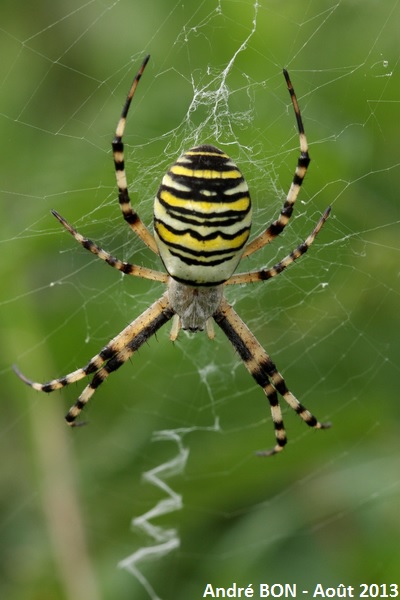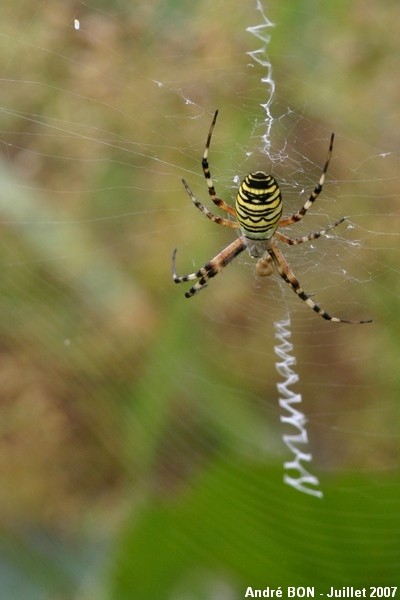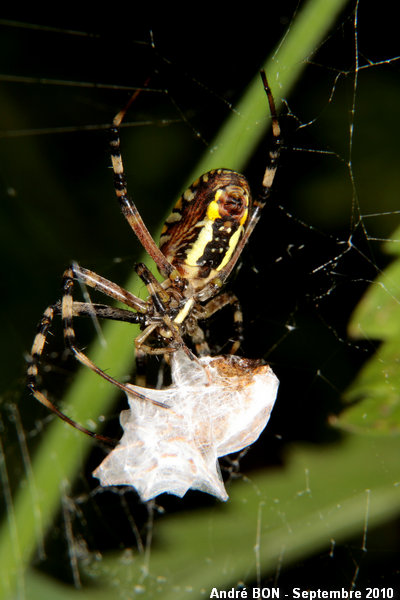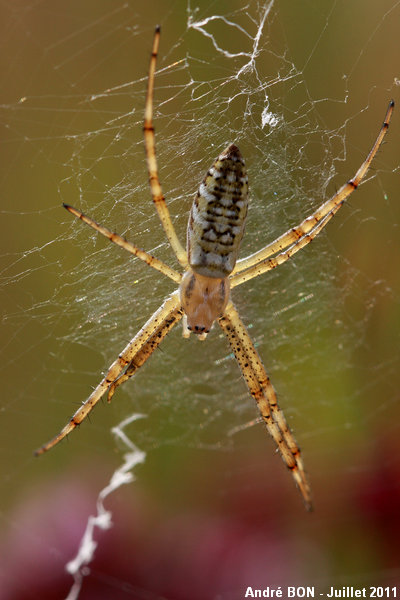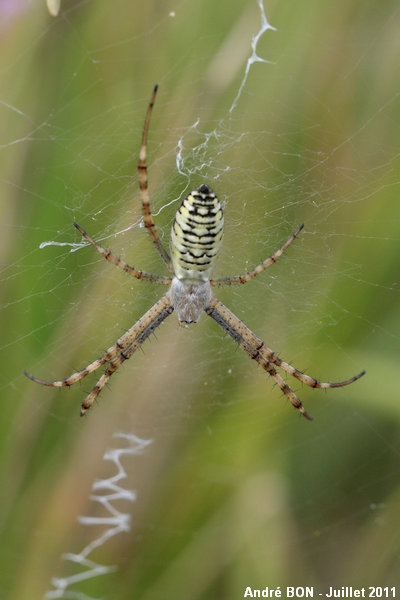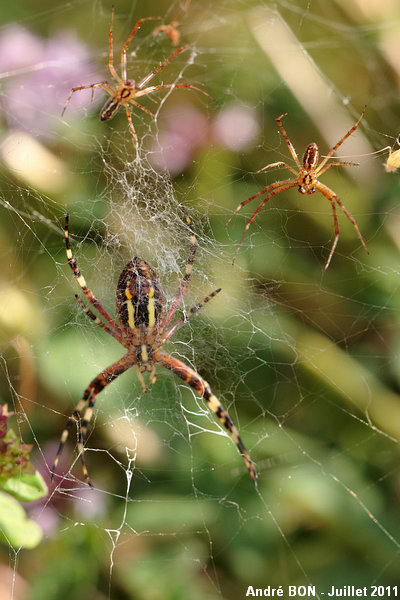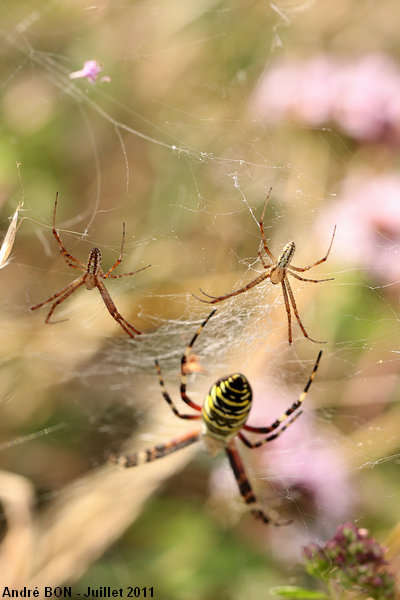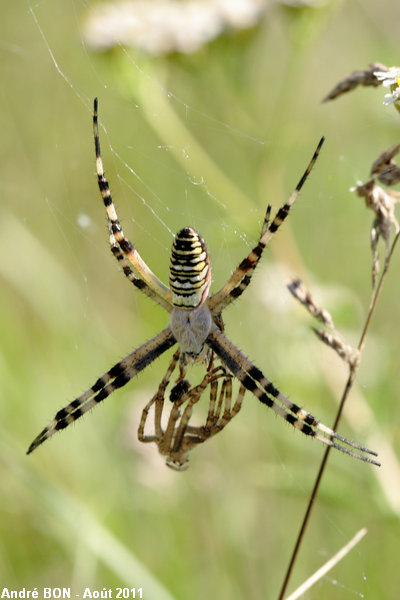Scientific name: Argiope bruennichi (Scopoli, 1772)
Common name: Wasp Spider
Other names: Striped Argiope, Banded Argiope, Zebra Spider, Banded Garden Spider
French name: Argiope frelon, Argiope rayée, Argiope fasciée ou Epeire fasciée
Order: Araneae
Family: Argiopidae
Size: Body size: 25 mm for the female, only 6 mm for the male.
Biotope: High grasses, bushes, fallow lands, reed beds and any very sunny area with low vegetation. The higher density can be found in damp locations where there many insects.
Web: Large circular orb-web with about 30 radii (between 19 and 41). It has a white zigzag shape called the stabilimentum. The orb-web is vertically positioned and never higher than 1.2 meters from the ground. The Wasp spider usually hangs head downward at the centre of the web, on the stabilimentum.
Observation period: You can observe adults from June to the first cold days.
Geographic area: Temperate Europe (originated from the Mediterranean Basin), North Africa, Western Africa.
|
The female has a hairy shiny pale grey cepahlothorax.
The abdomen is white and crossed by wavy black and yellow bands.
These colours, mimicking wasp colours, are a good way to protect from birds.
The legs are greyish brown, ringed with black.
Males are smaller than females. They have a cylinder-shaped abdomen with two longitudinal bands, with irregular border, on a brownish yellow background.
Man thinks that preys are attracted to the brightness of the stabilimentum.
Most of the adult female's preys are locusts.
After mating, females lay 200 to 300 eggs in a brown cocoon hanging at a low height from the ground.
Eggs over winter.
|





















